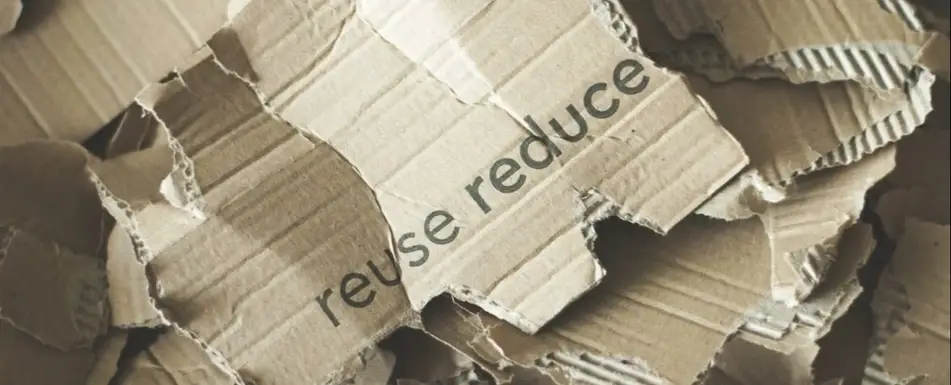Your Guide to Launching an Eco-Friendly Workplace Campaign

We can’t all work at the world’s most eco-friendly companies. But as we gear up for Earth Day on April 22, we can each take stock of the personal choices we make at work to reduce our ecological footprint and encourage our colleagues to be more eco-conscious as well. It all comes down to determining which changes at your workplace will make the biggest difference and tackling them together, one by one.
Here you’ll get a framework for thinking about your consumption of goods and services at work, some tips on being an eco-friend, and how to engage others on your team in doing the same.
Think in terms of impact
First let’s look at which behaviors have the biggest negative environmental impacts. Studies about individual consumer habits show that reducing consumption of goods and services is key. We can share goods and services, use them more efficiently, avoid buying them in the first place, and dispose of them properly. To learn about the key elements of sustainable lifestyles, check out the behavior changes recommended by the UN’s low-carbon lifestyle challenge.
As you research the ways in which your own organization might be overconsuming, remember you’ve probably got a great ally in your office already: your facilities manager. Treat them to lunch and ask what they’re seeing in terms of office consumption, as well as about any sustainability initiatives already underway. You’ll likely learn about how your company is doing things—often behind the scenes—to reduce consumption. Share your interest in doing more at work to support the environment. Come to this conversation from a place of authenticity, not self-righteousness, to ensure you get off to a great start.
Decide which eco-friendly behaviors to encourage
Now that you’ve got a partner and some helpful data in hand, it’s time to think about which environmental faux pas are most prevalent in your office, and which you might want to curb. Consider whether your team is already carrying out these actions—and, if not, how they might be implemented:
- Turning off lights when the space is not in use.
- Getting the entire team to use reusable water bottles instead of offering bottled water.
- Printing fewer documents.
- Eating less meat on lunch break outings (check out “Meat-Free Mondays”).
- Changing your commute—biking, busing, carpooling, or walking to work instead of driving alone.
- Consolidating office supply purchases to reduce the number of deliveries—and boxes— you get.
- If your office is not properly disposing of what you already use, implementing “easy wins” such as recycling bins for paper goods, plastic, and cans.
Now that you’ve got a better handle on the habits and consumption of your own office, it’s time to identify a goal you might like to lead the team in reaching. Select a goal that can be quantified; can be addressed in a fun and engaging way; has the support of your boss, your facilities manager, and other key stakeholders; and can be paired with a great incentive, prize, or intrinsic motivation so the team is eager to participate. Check out these ideas for keeping it engaging.
Create a campaign for you and your eco-friends
With the goal in mind, it’s time to create an “eco-friend challenge.” Set aside a week or month for your first challenge to keep momentum and energy strong. (Later you might be able to plan a quarterly challenge but for now, best to start with a short-term goal.)
When you’re ready to launch your challenge, here’s an email template you can use to get others engaged:
Dear Colleagues,
We all care about the environment, and I know there are many actions we each take at home and work to reduce our environmental impact. But there’s even more we can do. I’ve been looking at the data about workplace pollution and it turns out that we can make [insert data-driven impact here, such as “a 20% reduction in our food waste”] if we [insert action you want to incent here, such as “each buy one less side dish at lunch”]. This is just one great way to reduce harm to the environment with one simple change in our daily behavior! Better yet, it turns out that, based on my informal poll around the office, [insert the high percentage of people already doing this based on your office research, such as “60%”] of us are already doing this at least once per week.
I’d like to lead us in a challenge this [month/quarter] that will encourage all of us to make this behavior change for good and see what impact we can make together. Our goal: [insert here]. Our deadline: [insert date here].
We’ll kick of the challenge next Monday. Over lunch every day this week, I’ll be at [location] to share more about what I’ve learned, how you can participate in the challenge, and the prizes that we get if we reach the goal collectively. (You’ll love them.)
Being a leader at work means not only rocking your job description, but taking a stand for the things that matter to you personally. It means eagerly jumping in to advance organizational change. What better way to do this than by taking a stand for sustainability this Earth Day?
Did you enjoy this post? There's plenty more where this came from! Subscribe here for updates
Liz S. Peintner is a leadership coach and consultant based in Denver, Colorado who has spent her entire career in the social impact field. She helps people to better understand what drives them so they can choose careers they love and ultimately make positive social impact in ways that speak to their talents and passions.


